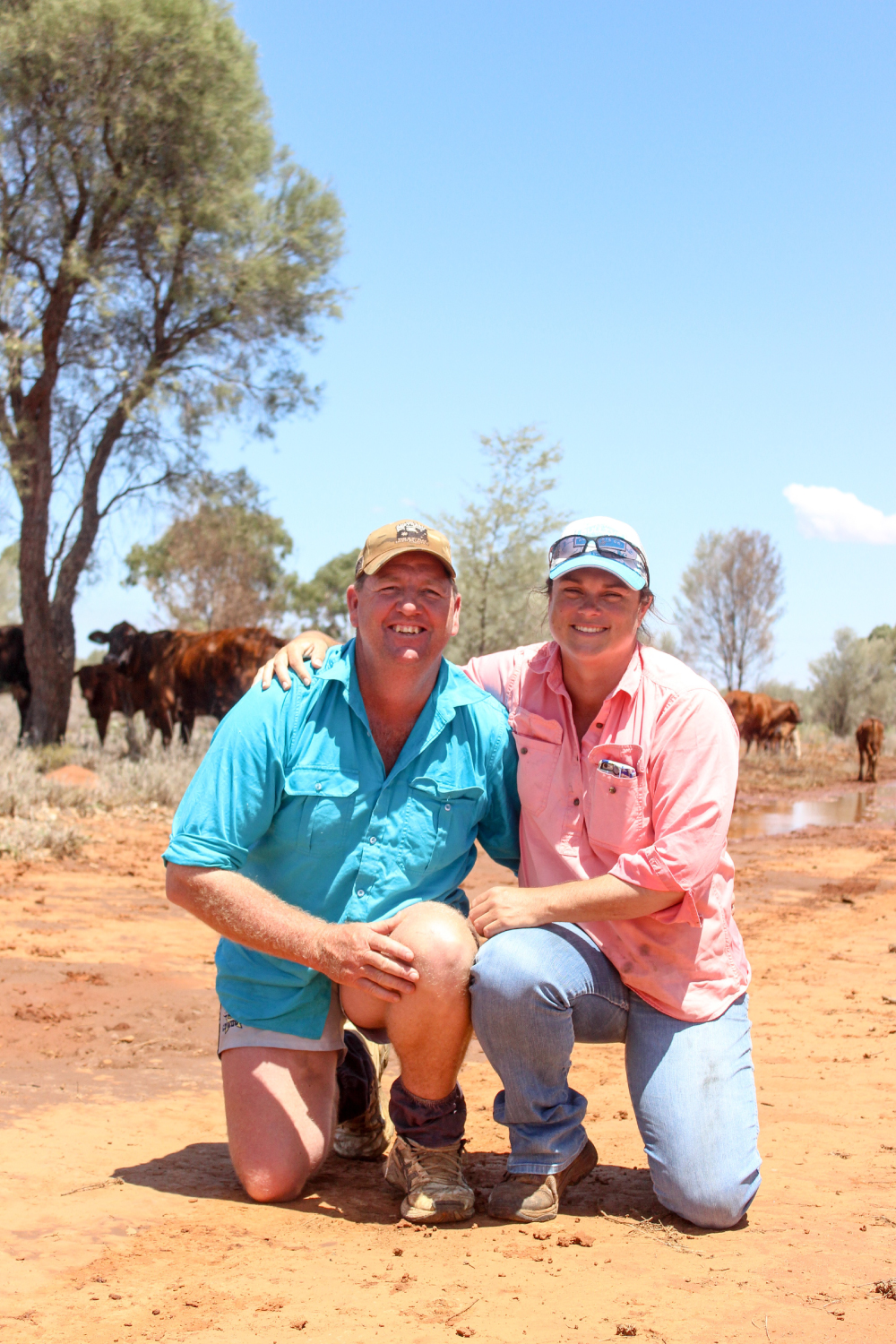A new QAAFI research project aimed at producing a preventative probiotic for cattle to mitigate poisoning from the potentially fatal pasture plant, pimelea, received funding from Meat & Livestock Australia (MLA) in 2017.
Improving beef production through management of plant toxins is led by QAAFI’s Associate Professor Mary Fletcher.

MLA identified the impact of poisonous pasture plants on the health and productivity of grassfed cattle as a priority area, through the organisation’s regional consultation process with producers.
Pimelea are small native herbs that are mainly found in inland areas of Australia, below the Tropic of Capricorn, with livestock poisoning primarily associated with native rice-flower (Pimelea simplex), and flaxweed (Pimelea trichostachya).
Pimelea poisoning affects cattle, sheep and infrequently horses, however it is potentially fatal for cattle. It can be caused by ongoing, accidental consumption of toxic plants or inhalation of dry plant dust and is most common in south-west Queensland, north-west New South Wales and northern South Australia.
It is also known as St George disease, Marree disease, and flaxweed poisoning.
MLA General Manager – Producer Consultation and Adoption, Michael Crowley, said the new project aimed to produce a rumen inoculum containing microbes able to detoxify plant toxins, but initial work will concentrate on the pimelea toxin, simplexin.
“The project will also investigate absorbent or slow-release systems for the rumen that would have broad use across a range of plant toxins,” Mr Crowley said.
“The approach of this project is to devise strategies to enable toxin breakdown in the rumen before absorption into the bloodstream and impact on animal productivity.
“Currently, there is no effective vaccine or antidote for pimelea poisoning and management strategies to reduce contact between toxic plants and susceptible stock are the only options open to beef producers to avoid potentially devastating poisoning events.
“Production and reproductive inefficiencies are a major cause of economic loss in the northern Australian beef cattle industry. A better understanding of the impact of poisonous pasture plants like pimelea will enable the development of management strategies to address a currently under recognised factor contributing to these losses.”
Battling the pimelea scurge
Enterprise snapshot
John and Queenie Kilpatrick, Kylie Savidge and TJ Moroney
Location: ‘Southampton’, 110 kilometres north-west of St George
Area: 11,000 hectares
Livestock: Up to 700 breeders, Santa Gertrudis and Hereford-based crossed with Santa Gertrudis, Hereford, Droughtmaster and Angus sires
Rainfall: 425mm
Soil: Open red box country interspersed with sand ridges and rough mulga country
Pasture: Buffalo and native grasses, mulga

South-western Queensland producer Kylie Savidge knows all too well the devastating impact pimelea can have, with her family’s grazing enterprise still recovering from an outbreak of the toxic native plant at the start of 2017.
She believes new research to develop an inoculum to pimelea will finally give beef producers a tool to reduce or prevent poisoning and alleviate the emotional and financial stress associated with stock fatalities and decreased production.
Kylie runs ‘Southampton’, an 11,000-hectare property 110 kilometres south-west of St George, with her parents John and Queenie Kilpatrick, her partner TJ Moroney and her children Jack (17), Ben (14) and Meghan (12).
Dry conditions in 2016 were exacerbated by the resurgence of pimelea growing across about 8000ha of the property.
The most favourable growing conditions for the species are when a wet winter follows a dry summer – dealing a harsh blow to producers who have managed cattle through tough seasons only to face poisoning concerns when conditions improve.
Kylie describes the pimelea as “looking like we had sown it”, such was the prevalence of the plants in spring 2016, after a wet, warm winter followed several dry years. However, as the green plants are not palatable, the real impact was not felt until paddocks started to dry off in January/February 2017.
“As the grass hayed off, we started seeing the effects of pimelea poisoning – affected animals had swollen briskets and heads, rough coats, weight loss and terrible diarrhoea,” she said.
Older cattle were not as badly affected, and the worst cases of poisoning occurred with first-calf heifers, weaners and introduced stock, including bulls.
Pimelea management strategies at ‘Southampton’ included removing stock from affected paddocks and on to mulga country where there was less risk, and weaning calves earlier (four to five months instead of seven to eight) to reduce pressure on breeders.
Severely affected stock were carefully moved to yards to reduce stress (cattle can die if they are exerted after exhibiting early signs of poisoning) where they were given three doses per day of Frusemide (a diuretic) and fed a high-protein diet with mineral supplements. (Dry urea-based loose lick is also available year-round to stock on ‘Southampton’.)
At any given time there could be up to 60 head in the yards in various stages of treatment and recovery – a labour-intensive and stressful process. “Some of these cattle lived and some didn’t, but we gave them all an equal chance. It was heartbreaking at the end of an intensive five days to then have to euthanise an animal we fought to save, knowing we could not do anything else except end their suffering,” Kylie said.
“I estimate that we had around a 50:50 success rate in our attempts to treat the sick animals, with costs per animal ranging between $250 to more than $1000 per head.”
The family have lost at least 70 head to pimelea, including 12 of 18 bulls, the majority of which were only purchased in 2016 to replace older sires.
The economic cost of pimelea has been significant, with medical and feeding costs compounded by lost productivity. There is also a chance the fertility of affected animals is compromised, so surviving bulls will be semen-tested.
“It has been exhausting – not only physically but emotionally, mentally and financially,” Kylie said, with the issue taking its toll on the family, including her three children who have been involved in all aspects of managing the outbreak.
“My kids won’t ever forget this experience – none of us will. It might be years between pimelea outbreaks but it is something that has a lasting impact on the producers who experience it.
“The knowledge that there could be an inoculum available in the next few years is encouraging. It would be a weight off our shoulders if we could go into the next pimelea outbreak knowing we had a tool that could protect our livestock.”




